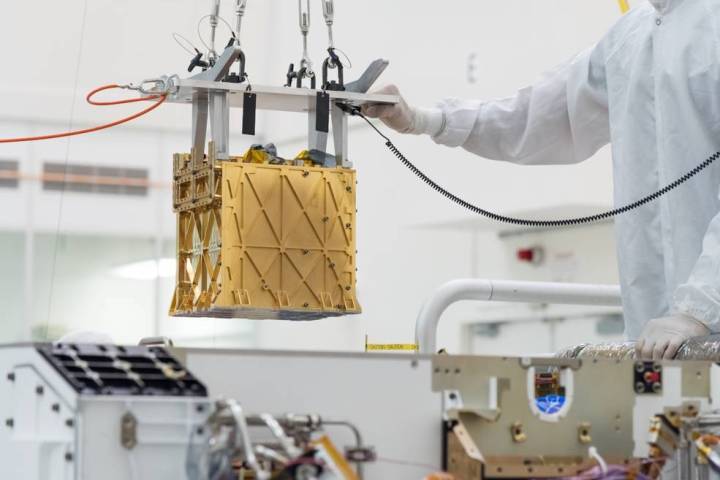
NASA’s Perseverance rover, which arrived on Mars in February 2021, scored a first on Tuesday when it successfully converted some of the red planet’s thin, carbon dioxide-rich atmosphere into oxygen.
The achievement marks the first-ever production of oxygen on another planet and takes us a step closer to launching a crewed mission to Mars.
Perseverance performed the feat using its on-board Mars Oxygen In-Situ Resource Utilization Experiment instrument, otherwise known as MOXIE.
The technology demonstration is important on two counts. First, it could offer a path to creating breathable air for future astronauts visiting Mars. And second, it provides engineers with useful data on how to isolate and store oxygen on the planet, a process essential for launching rockets off the Martian surface when it’s time for astronauts to return to Earth.
“This is a critical first step at converting carbon dioxide to oxygen on Mars,” said Jim Reuter, associate administrator for NASA’s Space Technology Mission Directorate. “MOXIE has more work to do, but the results from this technology demonstration are full of promise as we move toward our goal of one day seeing humans on Mars.”
Reuter added: “Oxygen isn’t just the stuff we breathe. Rocket propellant depends on oxygen, and future explorers will depend on producing propellant on Mars to make the trip home.”
A rocket has to have more oxygen by weight in order to burn its fuel. Lifting four astronauts off the Martian surface would need around 15,000 pounds (7 metric tons) of rocket fuel and around 55,000 pounds (25 metric tons) of oxygen.
Oxygen is also vital for astronauts if they’re to live and work on the red planet, though much less will be needed than for a rocket — around one metric ton for four astronauts for an entire year, according to NASA.
Transporting 25 metric tons of oxygen from Earth to Mars would be an enormous challenge, while taking a one-ton oxygen converter — in other words a larger, more powerful version of toaster-sized MOXIE — would be an altogether more manageable endeavor, NASA said.
Making oxygen on the red planet
MOXIE is designed to separate oxygen atoms from carbon dioxide molecules, which comprise one carbon atom and two oxygen atoms. During the process, carbon monoxide is emitted into the Martian atmosphere as a waste product.
“The conversion process requires high levels of heat to reach a temperature of approximately 1,470 degrees Fahrenheit (800 Celsius),” NASA explained. “To accommodate this, the MOXIE unit is made with heat-tolerant materials. These include 3D-printed nickel alloy parts, which heat and cool the gases flowing through it, and a lightweight aerogel that helps hold in the heat. A thin gold coating on the outside of MOXIE reflects infrared heat, keeping it from radiating outward and potentially damaging other parts of Perseverance.”
MOXIE’s initial oxygen production process created about five grams — good for 10 minutes of breathable oxygen for an astronaut — though the device can generate up to 10 grams of oxygen per hour.
The technology demonstration was designed to prove that such a device can survive a six-month space trip and function properly on the Martian surface. MOXIE is expected to repeat the conversion process at least nine more times over the next two years, with each process performing different equipment tests in varying atmospheric conditions.
For more about MOXIE, check out this in-depth article on Digital Trends.


